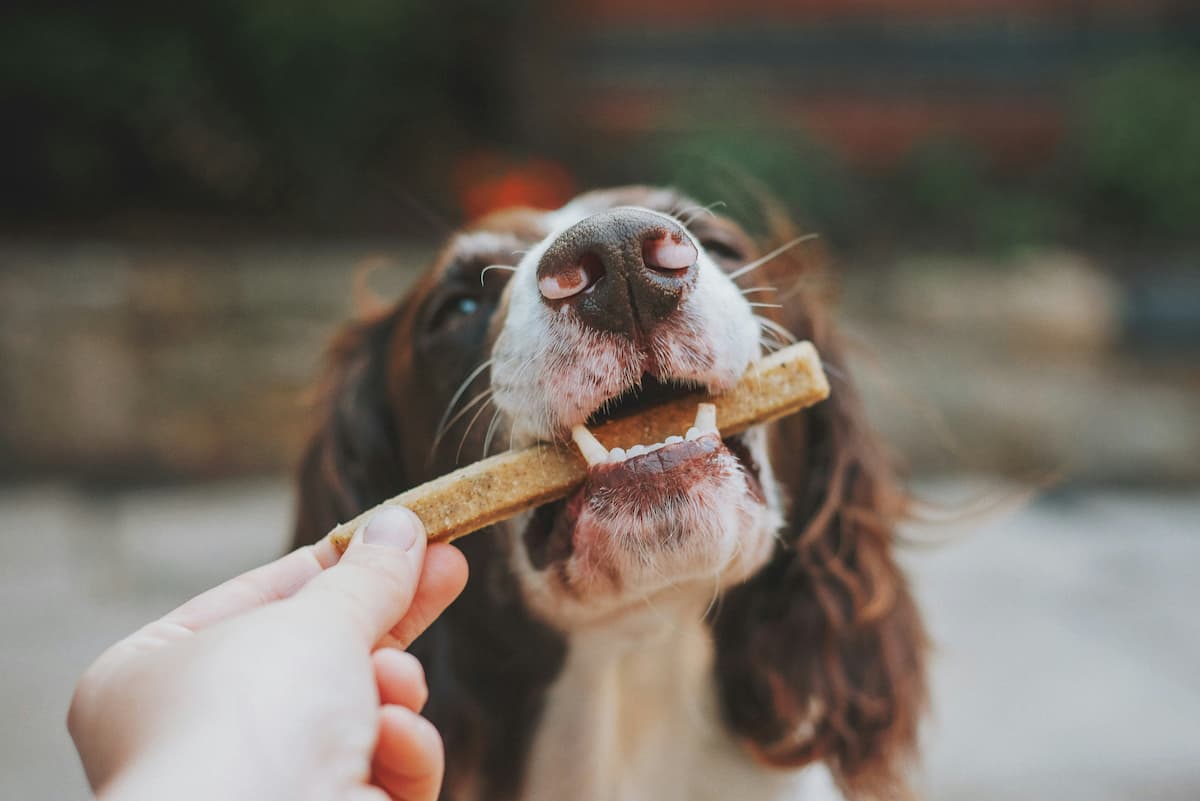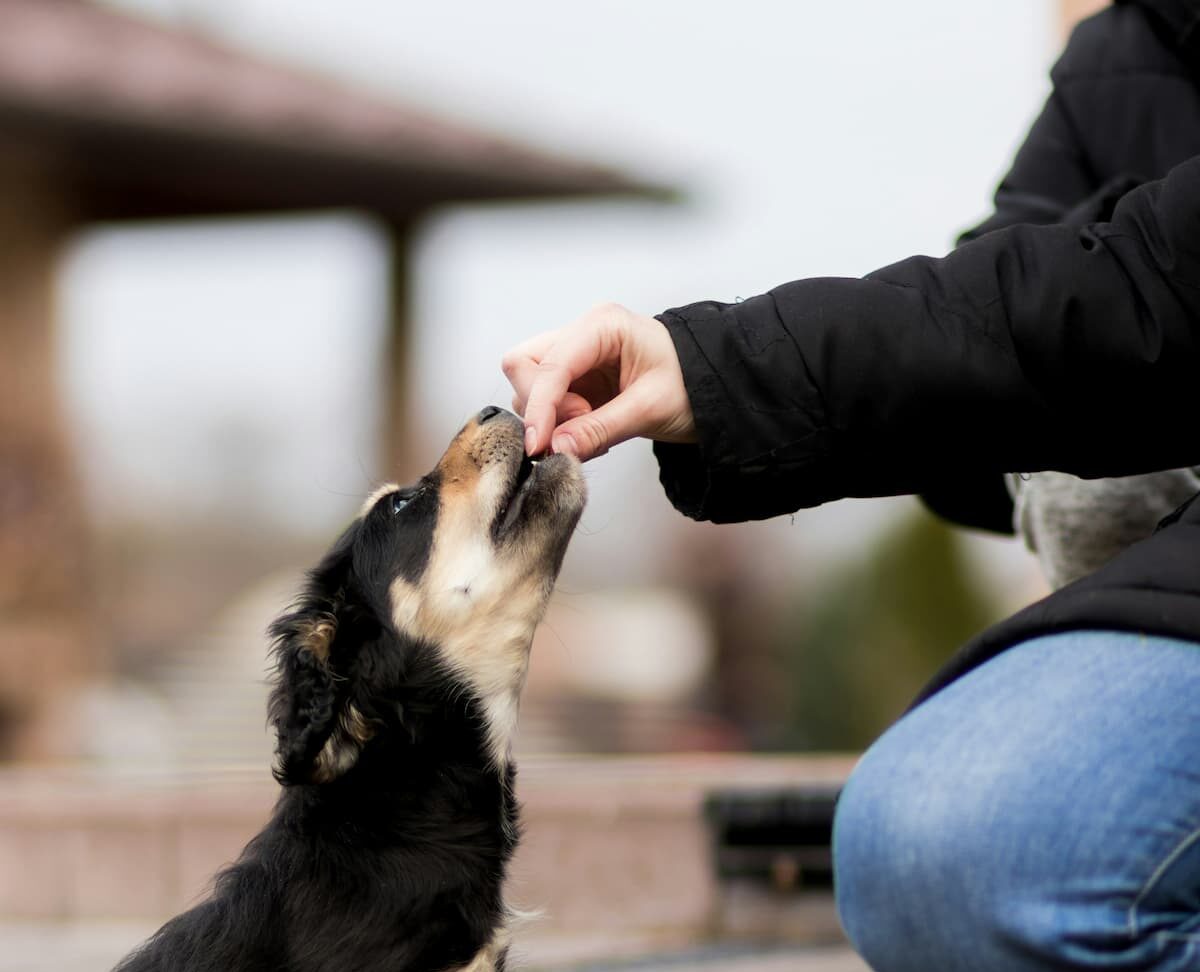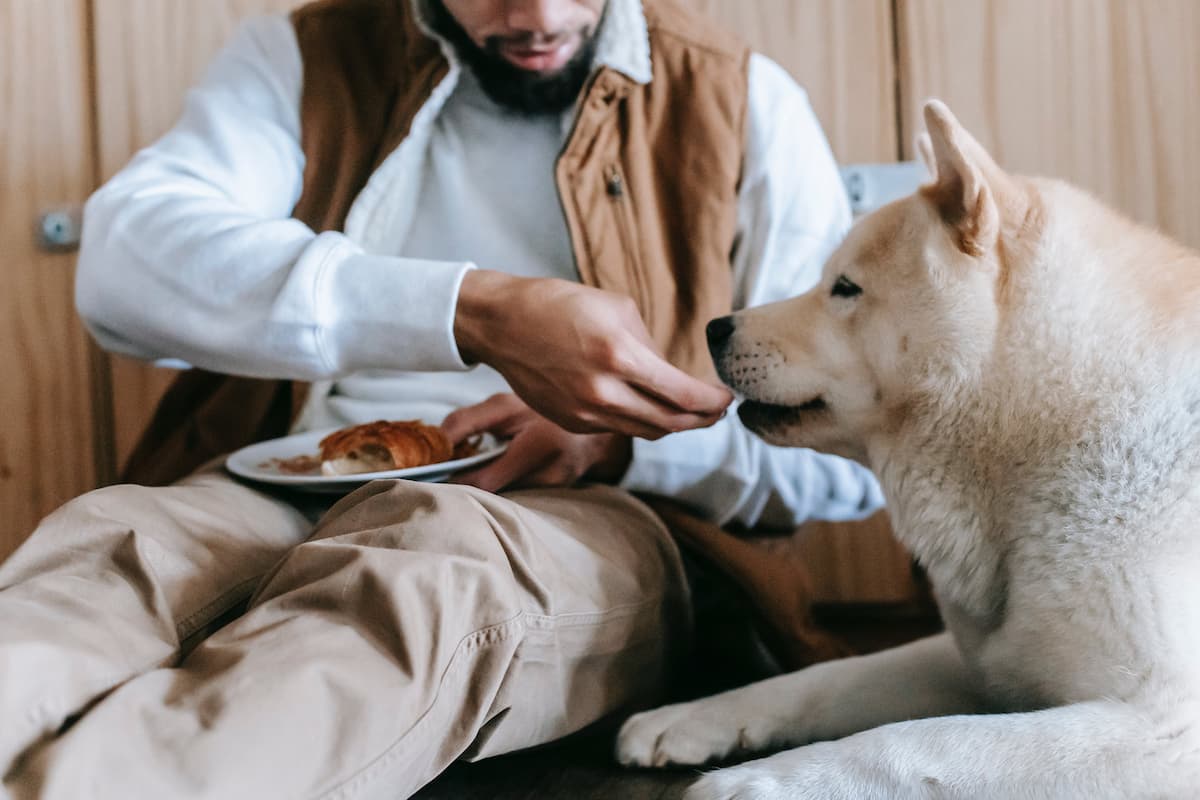It’s a sunny afternoon, and you are taking a leisurely stroll in the park with your furry four-legged companion.
As you reach into your pocket and pull out a small, gleaming treat, your pup’s eyes immediately light up, tail wagging in anticipation.
But hold on a second!
Weren’t they already well-fed with a carefully measured portion of nutritionally balanced dog food?
So, why do they prefer those delicious treats over their regular meals?
This article will shed some light over this perplexing dietary behavior.
Why Dogs Prefer Treats Over Regular Food
Dogs and treats seem to go hand in paw.
It’s no secret that our furry friends go absolutely bonkers over a tasty treat.
But have you ever wondered why they have such a strong preference for treats over their regular food? Turns out there are a few reasons behind this canine craving.
Firstly, taste plays a big role in why dogs are typically more excited about treats.
Just like humans, dogs have taste buds that are sensitive to different flavors. However, their taste buds are not as sophisticated as ours.
While humans have around 9,000 taste buds, dogs have only about 1,700.
So, the flavors in dog treats need to be strong and appealing to catch their attention and satisfy their taste sensors.
Thus, while their regular kibble might be nutritious and balanced, it can sometimes lack that burst of flavor that treats offer.
Treats often have high levels of fat, protein, and salt, which can make them more enticing to dogs and they often come in wide range of flavors like beef, chicken, peanut butter, and even sweet potato.
These flavors are designed to tantalize their taste buds and create an irresistible experience for our adorable pals.
But flavors alone are not enough to make dog treats a favorite among our furry friends.
Texture also plays a crucial role in their enjoyment.
Dogs, just like us, appreciate different textures and mouthfeels.
You’ve probably noticed how some treats are crunchy, while others are soft and chewy.
This variety of textures is intentional and designed to cater to different preferences, as not all dogs have the same chewing abilities or dental conditions.
The crunchiness of a biscuit brings a satisfying sensation to dogs who enjoy gnawing on something firm, while the chewiness of jerky treats can provide a more delightful experience for dogs who prefer a softer texture. These treats not only serve as delicious rewards but also promote dental health and satisfy their natural instinct to chew.
Another reason why dogs go crazy for treats is their strong sense of smell.
Canines have an incredible olfactory system, capable of detecting even the faintest of aromas.
Treats are often made with enticing scents that capture a dog’s attention and stimulate their appetite.
The irresistible aroma of a treat can instantly grab their focus and motivate them to perform desired behaviors during training.
The second reason why dogs often prefer treats is the association they have with them.
Dogs are incredibly smart creatures and quickly catch on to patterns.
Just like how humans might link certain foods with happy memories, dogs have a similar response.
Every time they are rewarded with a treat for good behavior or training achievements, their brains release a rush of feel-good hormones such as dopamine.
This association creates a positive reinforcement loop in their minds, making them even more excited about treats.
So, every time a dog hears the rustle of a treat bag or sees that familiar package, their tails start wagging, expecting something delicious and rewarding.
How to Choose the Right Treats for Your Dog
When it comes to selecting the perfect treats for your furry friend, there are several important factors to consider.
First and foremost, you should take into account your dog’s dietary needs and preferences.
Not all treats are created equal, and it’s crucial to choose ones that align with your pup’s specific nutritional requirements.
Whether your dog needs a grain-free option, has allergies, or requires a specific type of protein, be sure to read the labels and choose treats that meet their dietary needs.
It’s always a good idea to consult with your veterinarian to ensure you’re making the right choices.
Another factor to consider is the size and texture of the treat.
Dogs come in all shapes and sizes, and some treats may be too big or too hard for your pup to chew on comfortably.
Opt for treats that are the appropriate size for your dog’s breed and take into consideration their dental health.
Dental chews and treats with textured surfaces can help promote good oral hygiene.
Remember, each dog is different, so observe your furry friend’s chewing habits to determine the most suitable treat for them.
Lastly, the ingredients in the treats deserve attention. Just like humans, dogs can have allergies or sensitivities to certain ingredients.
Avoid treats that contain artificial preservatives, colors, or flavors, as these might not be favorable for your pup’s overall well-being. Look for treats made with natural and high-quality ingredients that provide nutritional benefits.
Some great options include treats containing real meat, fruits, and vegetables.
These treats not only taste delicious to your dog but also provide them with essential nutrients.
Tips for Using Treats Effectively in Training and Bonding with Your Dog
When it comes to training our furry friends, treats can be an invaluable tool.
Dogs have an innate love for bite-sized goodies, and using them strategically can help reinforce positive behaviors and strengthen the bond between you and your canine companion.
Here are some tips to make the most out of treats during training sessions:
1. Choose High-Value Treats
To ensure your dog stays motivated and excited during training, opt for treats that they consider special.
These can be flavorful treats with a strong aroma or those with a soft and chewy texture.
High-value treats will have a much greater impact on your dog’s enthusiasm, making them more willing to learn new commands and behaviors.
Remember to take into account any dietary restrictions or allergies your pup may have when selecting their rewards.
2. Keep Treat Sizes Small
In training, it’s important to keep treat sizes small so your dog can quickly consume them without getting too full or losing focus on the lesson.
Tiny morsels are not only easier for your pup to eat quickly, but they also allow for more repetitions and reinforce positive behavior more frequently.
Small treats also help prevent excessive calorie intake, especially during longer training sessions or when you’re practicing multiple commands.
3. Mix Up the Rewards
While treats are a fantastic tool, relying solely on them can limit the variety in your training sessions. To keep things interesting and prevent treat dependency, consider mixing up the rewards.
Alternate between treats, verbal praise, petting, and playtime to reinforce good behavior.
This will help your dog understand that being obedient doesn’t always result in a treat, making them more responsive in real-life situations where you may not have treats readily available.
By considering your dog’s dietary needs, the size and texture of the treats, and the ingredients they contain, you’ll be well on your way to selecting the perfect treats for your furry friend.
Not only will they enjoy these tasty rewards, but you’ll also have the peace of mind knowing that you’re providing them with something that contributes to their overall health and happiness.
So, go ahead and spoil your pup with a treat that will make their tail wag with delight!
FAQ
Q: Are treats more delicious than regular food for dogs?
A: It’s not that treats are inherently more delicious, but they definitely tickle a different spot in their taste buds.
You see, regular dog food is formulated to provide all the essential nutrients pooches need to stay healthy.
While it may be appetizing to them, it lacks the irresistible flavors and captivating textures that treats offer.
Treats come in various tantalizing flavors like beef, chicken, or even bacon—cue the drooling!
Q: Could it be related to their instincts or natural behavior?
A: Absolutely! Canines have a deeply ingrained instinctual drive inherited from their ancestors—the mighty wolves.
Wolves rely on their sense of smell to find and devour their prey.
Treats, with their intense smells and attractive aromas, tap into this primal behavior, awakening the wild side in our domesticated buddies.
They simply can’t resist the allure of something that reminds them of hunting and scavenging for food.
Q: Is there a psychological aspect to this treat obsession?
A: You bet there is! Dogs are intelligent creatures, much like that one friend who always has room for dessert. When we reward them with treats, it creates a positive association in their minds.
Chewing on a tasty tidbit sends a signal to their brains, releasing feel-good neurotransmitters like dopamine, which leaves them wanting more.
It’s like winning a tasty lottery—a surefire way to make them wag their tails!
Q: Are there any other reasons for this treat preference?
A: Oh, you betcha! Giving treats is often associated with joyful moments, like training sessions or moments of affection.
Dogs become conditioned to associate treats with positive experiences, making them even more special in their eyes.
You know that feeling when someone surprises you with an unexpected treat? Well, multiply that by ten, and that’s how dogs feel every time they’re handed one!
Q: So, should I completely replace dog food with treats?
A: As tempting as it might be to transform your pupper’s diet into a smorgasbord of treats, it’s important to remember that treats should remain just that—treats! While they are a wonderful way to show our pets love and appreciation, they should never replace a balanced diet.
Dog food is designed to provide all the necessary nutrients for their well-being, so it’s vital to maintain a healthy balance between regular meals and the occasional treat extravaganza.
Closing Remarks
Now you know why dogs like treats more than food.
You see, treats provide an immediate gratification for dogs.
Their taste buds go wild as they savor the flavors, enhancing their overall enjoyment.
In contrast, regular food lacks that special touch, lacking in the variety and excitement that treats bring to the table – or should we say, bowl? Moreover, the texture of treats often differs from their regular meals, adding an extra element of fun.
Crunchy, chewy, or even melt-in-your-mouth, treats offer a diverse range of sensations that could make any pup’s tail wag uncontrollably.
But let’s not forget the power of association.
Over time, dogs have learned to associate treats with positive experiences.
From training sessions filled with treats raining down for a job well done, to the joyous moment of receiving that special treat after days spent apart, the emotional connection formed with treats becomes imprinted in their minds.
Think about it this way: imagine you’re handed a bland sandwich versus a mouthwatering slice of pizza.
Which one would you choose? The same principle applies to our four-legged pals.
Treats provide that extra punch of flavor and excitement that regular food can’t quite replicate.
So, why do dogs like treats more than regular food? It’s not that they dislike their meals or find them unappetizing.
Dogs simply have a deep-rooted appreciation for the multi-sensory experience that treats offer.
It’s like having a little celebration in their mouths every time they enjoy one.
Next time you offer your canine companion a treat, remember that you’re not just providing sustenance – you’re giving them a moment of bliss.
And who can resist that adorable, wide-eyed look of gratitude they give in return?














